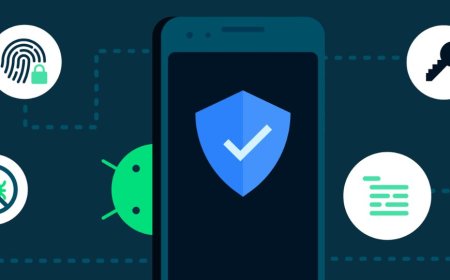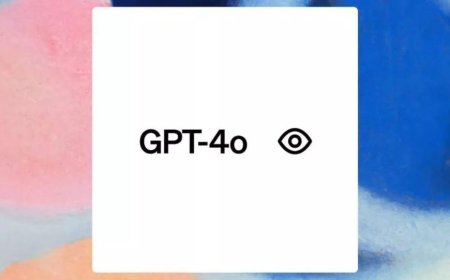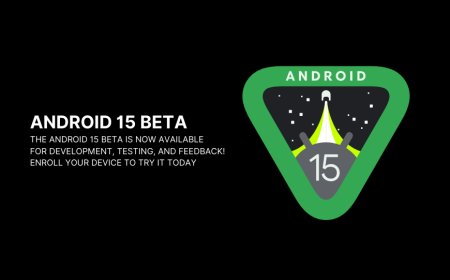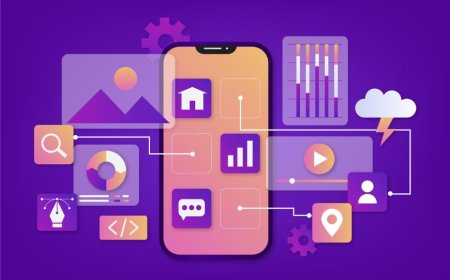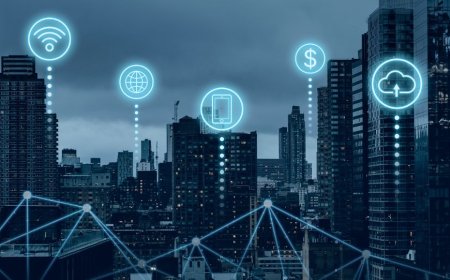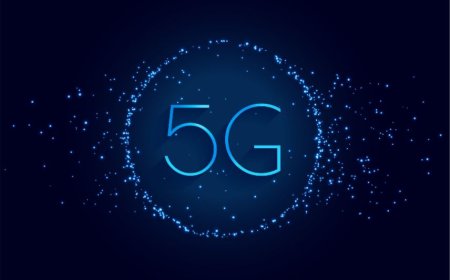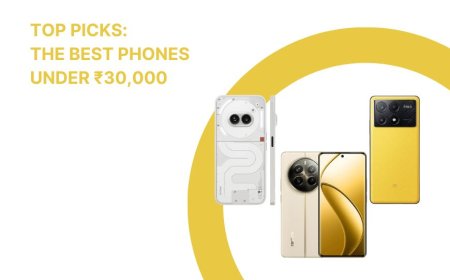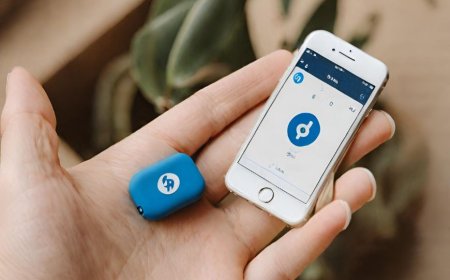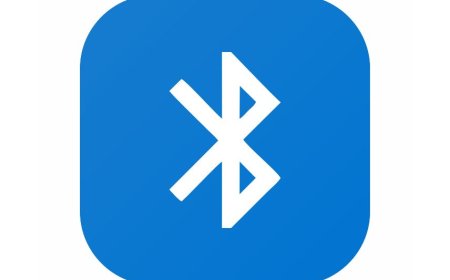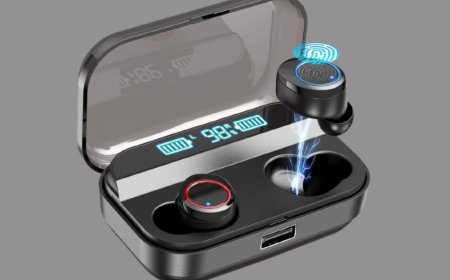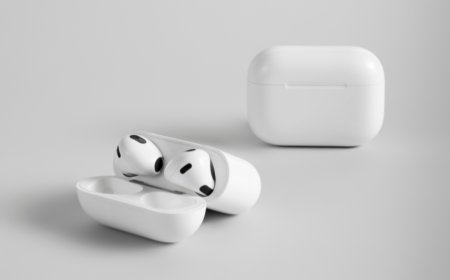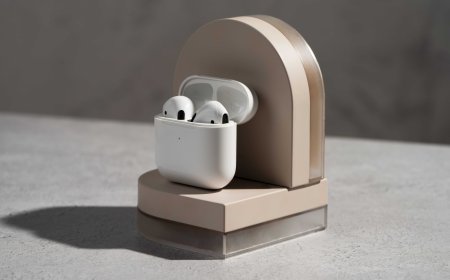"Smartphone Showdown: Best of 2023"
Don't miss out on the best new tech of 2023! Join us for the Smartphone Showdown and see which devices come out on top, with Tectoks leading the way.
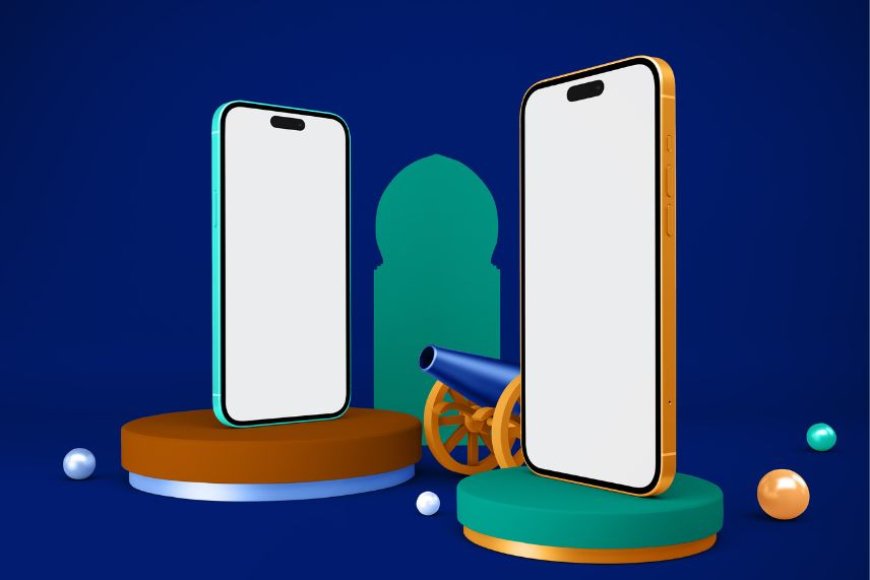
Table of Contents:
-
Introduction
-
Camera
-
Performance
-
Design
-
Battery
-
Conclusion
-
Call to action
1. Introduction
Smartphones are one of the most essential gadgets in our daily lives. They allow us to communicate, work, play, learn, and enjoy various forms of entertainment. However, with so many options available on the market, how do we choose the best smartphone for our needs and preferences? What are the features and specifications that make a smartphone stand out from the rest?
In this blog post, we will compare and contrast the best smartphones of 2023 based on various criteria such as camera, performance, design, battery, and features. We will look at some of the main contenders for the title of the best smartphone of 2023, such as the Samsung Galaxy S23 Ultra, the Apple iPhone 15 Pro Max, the Google Pixel 8 Pro, and the Vivo X90 Pro. We will analyze their strengths and weaknesses and see how they fare against each other in different aspects.
The blog post will consist of four sections: camera, performance, design, and battery, followed by a conclusion and a recommendation. In each section, we will evaluate the smartphones based on their technical specifications, user reviews, expert opinions, and real-world tests. We will also provide some examples of photos and videos taken by each smartphone, as well as some benchmarks and ratings.
By the end of this blog post, you will have a clear idea of which smartphone is the best for you and why. You will also learn about the latest trends and innovations in the smartphone industry and what to expect in the future. So, without further ado, let’s dive into the comparison of the best smartphones of 2023!
Here is a possible explanation of the camera capabilities of the four smartphones, based on the keywords Best camera phones 2023 and 2023 smartphone reviews:
2. Camera
The camera on a smartphone has one of the most crucial functions. A good camera can capture stunning photos and videos, preserve precious memories, and express your creativity. However, not all cameras are created equal, and different smartphones offer different camera capabilities. In this section, we will compare and contrast the camera capabilities of the four smartphones: the Samsung Galaxy S23 Ultra, the Apple iPhone 15 Pro Max, the Google Pixel 8 Pro, and the Vivo X90 Pro.
Resolution
The resolution of a camera is the number of pixels that it can capture in an image or a video. The higher the resolution, the more details and clarity the camera can produce. However, resolution is not the only factor that determines the quality of a camera, as other aspects such as the sensor size, the lens, the software, and the lighting also play a role.
The Samsung Galaxy S23 Ultra has the highest resolution camera among the four smartphones, with a whopping 200 megapixels for its main camera. This allows the Galaxy S23 Ultra to capture incredible details and zoom in without losing much quality. However, the Galaxy S23 Ultra also uses a technique called pixel binning, which combines nine pixels into one to create a 22.2-megapixel image with better dynamic range and low-light performance. The Galaxy S23 Ultra also has a 10-megapixel camera for 3x optical zoom, another 10-megapixel camera for 10x optical zoom, and a 12-megapixel camera for ultra-wide shots.
The Apple iPhone 15 Pro Max has a 12-megapixel camera for its main, telephoto, and ultra-wide cameras. While this may seem low compared to the Galaxy S23 Ultra, the iPhone 15 Pro Max compensates with a larger sensor size, a wider aperture, and sophisticated software processing. The iPhone 15 Pro Max also has a LiDAR scanner, which helps with autofocus, depth sensing, and night mode. The iPhone 15 Pro Max can capture 24-megapixel photos as an option, which gives more details and flexibility for editing.
The Google Pixel 8 Pro has a 50-megapixel camera for its main camera, which also uses pixel binning to create a 12.5-megapixel image with better quality. The Pixel 8 Pro is known for its computational photography, which uses artificial intelligence and machine learning to enhance photos and videos. The Pixel 8 Pro also has a 12-megapixel camera for ultra-wide shots and a 48-megapixel camera for 4x optical zoom.
The Vivo X90 Pro has a 50-megapixel camera for its main camera, which also uses pixel binning to create a 12.5-megapixel image with better quality. The Vivo X90 Pro has a unique feature called gimbal stabilization, which uses a mechanical system to stabilize the camera and reduce blur and shake. The Vivo X90 Pro also has a 12-megapixel camera for 2x optical zoom and a 48-megapixel camera for 5x optical zoom.
Zoom
The zoom capability of a camera is the ability to magnify distant subjects and bring them closer. There are two forms of zoom: optical and digital. Optical zoom uses the lens to change the focal length and magnify the subject without losing quality. Digital zoom uses the software to crop and enlarge the image, which results in a loss of quality.
The Samsung Galaxy S23 Ultra has the best zoom capability among the four smartphones, with a 10x optical zoom and a 100x digital zoom. The Galaxy S23 Ultra can capture clear and detailed photos and videos of faraway objects, such as the moon, buildings, and animals. The Galaxy S23 Ultra also has a 3x optical zoom, which is useful for portraits and medium-range shots.
The Apple iPhone 15 Pro Max has a 3x optical zoom and a 15x digital zoom. The iPhone 15 Pro Max can capture decent photos and videos of distant subjects, but not as well as the Galaxy S23 Ultra. The iPhone 15 Pro Max also has a 0.5x optical zoom, which is useful for ultra-wide shots and landscapes.
The Google Pixel 8 Pro has a 4x optical zoom and a 20x digital zoom. The Pixel 8 Pro can capture good photos and videos of distant subjects, but not as well as the Galaxy S23 Ultra. The Pixel 8 Pro also has a 0.6x optical zoom, which is useful for ultra-wide shots and landscapes.
The Vivo X90 Pro has a 5x optical zoom and a 60x digital zoom. The Vivo X90 Pro can capture good photos and videos of distant subjects, but not as well as the Galaxy S23 Ultra. The Vivo X90 Pro also has a 2x optical zoom, which is useful for portraits and medium-range shots.
Aperture
The aperture of a camera is the opening of the lens that controls the amount of light that enters the camera. The aperture is measured in f-stops, such as f/1.8, f/2.0, f/2.4, etc. The lower the f-stop, the wider the aperture, and the more light the camera can capture. A wider aperture also creates a shallower depth of field, which means that the subject is in focus and the background is blurred.
The Apple iPhone 15 Pro Max has the widest aperture among the four smartphones, with an f/1.5 for its main camera. This allows the iPhone 15 Pro Max to capture more light and create a more bokeh effect. The iPhone 15 Pro Max also has an f/2.0 for its telephoto camera and an f/1.8 for its ultra-wide camera.
The Samsung Galaxy S23 Ultra has an f/1.8 for its main camera, an f/2.4 for its 3x optical zoom camera, an f/4.9 for its 10x optical zoom camera, and an f/2.2 for its ultra-wide camera. The Galaxy S23 Ultra can capture enough light and create a decent bokeh effect, but not as well as the iPhone 15 Pro Max.
The Google Pixel 8 Pro has an f/1.8 for its main camera, an f/2.2 for its ultra-wide camera, and an f/3.4 for its 4x optical zoom camera. The Pixel 8 Pro can capture enough light and create a decent bokeh effect, but not as well as the iPhone 15 Pro Max.
The Vivo X90 Pro has an f/1.6 for its main camera, an f/2.0 for its 2x optical zoom camera, and an f/3.4 for its 5x optical zoom camera. The Vivo X90 Pro can capture enough light and create a decent bokeh effect, but not as well as the iPhone 15 Pro Max.
Stabilization
The stabilization of a camera is the ability to reduce the blur and shake caused by the movement of the camera or the subject. There are two types of stabilization: optical and electronic. Optical stabilization uses a physical mechanism to counteract the movement of the camera, while electronic stabilization uses software to crop and adjust the image.
The Vivo X90 Pro has the best stabilization among the four smartphones with its gimbal stabilization system. The Vivo X90 Pro can reduce blur and shake significantly, especially in low-light and video scenarios. The Vivo X90 Pro also has optical stabilization for its 2x and 5x optical zoom cameras.
The Samsung Galaxy S23 Ultra has optical stabilization for its main, 3x optical zoom, and 10x optical zoom cameras, and electronic stabilization for its ultra-wide camera. The Galaxy S23 Ultra can reduce the blur and shake moderately, but not as well as the Vivo X90 Pro.
The Apple iPhone 15 Pro Max has optical stabilization for its main and telephoto cameras and electronic stabilization for its ultra-wide camera. The iPhone 15 Pro Max can reduce the blur and shake moderately, but not as well as the Vivo X90 Pro.
The Google Pixel 8 Pro has optical stabilization for its main and 4x optical zoom cameras and electronic stabilization for its ultra-wide camera. The Pixel 8 Pro can reduce the blur and shake moderately, but not as well as the Vivo X90 Pro.
Autofocus
The autofocus of a camera is the ability to adjust the focus of the lens automatically to capture a sharp and clear image of the subject. There are different types of autofocus, such as phase detection, contrast detection, laser, and LiDAR. Phase detection uses the sensor to detect the phase difference of the light from the subject and adjust the focus accordingly. Contrast detection uses the sensor to measure the contrast of the image and adjust the focus accordingly. The laser uses a laser beam to measure the distance of the subject and adjust the focus accordingly. LiDAR uses a light detection and ranging system to measure the depth of the scene and adjust the focus accordingly.
The Apple iPhone 15 Pro Max has the best autofocus among the four smartphones, with its LiDAR scanner. The iPhone 15 Pro Max can focus quickly and accurately, even in low-light and complex scenes. The iPhone 15 Pro Max also has phase detection autofocus for its main, telephoto, and ultra-wide cameras.
The Samsung Galaxy S23 Ultra has phase detection autofocus and laser autofocus for its main, 3x optical zoom, and 10x optical zoom cameras, and phase detection autofocus for its ultra-wide camera. The Galaxy S23 Ultra can focus fast and precisely, but not as well as the iPhone 15 Pro Max.
The Google Pixel 8 Pro has phase detection autofocus and laser autofocus for its main and 4x optical zoom cameras, as well as phase detection autofocus for its ultra-wide camera. The Pixel 8 Pro can focus fast and precisely, but not as well as the iPhone 15 Pro Max.
The Vivo X90 Pro has phase detection autofocus for its main, 2x optical zoom, and 5x optical zoom cameras. The Vivo X90 Pro can focus fairly well, but not as well as the iPhone 15 Pro Max.
Night mode
The night mode of a camera is its ability to capture bright and clear photos and videos in low-light conditions. Night mode uses various techniques, such as long exposure, multiple frames, noise reduction, and artificial intelligence, to enhance the quality of the image.
The Google Pixel 8 Pro has the best night mode among the four smartphones with its Night Sight feature. The Pixel 8 Pro can capture amazing photos and videos in the dark, with vivid colors, sharp details, and minimal noise. The Pixel 8 Pro also has a feature called Astrophotography, which allows the Pixel 8 Pro to capture stunning photos of the stars and the night sky.
The Apple iPhone 15 Pro Max has a very good night mode with its Night Mode feature. The iPhone 15 Pro Max can capture great photos and videos in low light with natural colors, balanced exposure, and reduced noise. The iPhone 15 Pro Max also has a feature called Night Mode Portrait, which allows the iPhone 15 Pro Max to create a bokeh effect in the dark.
The Samsung Galaxy S23 Ultra has a good night mode with its Bright Night feature. The Galaxy S23 Ultra can capture decent photos and videos in low-light with bright colors, enhanced details, and moderate noise. The Galaxy S23 Ultra also has a feature called Night Hyperlapse, which allows the Galaxy S23 Ultra to create a time-lapse video in the dark.
The Vivo X90 Pro has a mediocre night mode with its Super Night Mode feature. The Vivo X90 Pro can capture average photos and videos in low-light with saturated colors, soft details, and noticeable noise. The Vivo X90 Pro also has a feature called Starry Sky Mode, which allows the Vivo X90 Pro to capture photos of the stars and the night sky.
Video quality
The video quality of a camera is its ability to capture smooth and clear videos with high resolution, frame rate, and dynamic range. The video quality also depends on the stabilization, autofocus, zoom, and audio of the camera.
The Apple iPhone 15 Pro Max has the best video quality among the four smartphones with its Cinematic Video feature. The iPhone 15 Pro Max can capture stunning videos with 4K resolution, 60 frames per second, and HDR10+ support. The iPhone 15 Pro Max also has a feature called Cinematic Mode, which allows the iPhone 15 Pro Max to create a cinematic effect with automatic focus shifting and depth of field control. The iPhone 15 Pro Max also has excellent stabilization, autofocus, zoom, and audio for its videos.
The Samsung Galaxy S23 Ultra has very good video quality with its 8K video feature. The Galaxy S23 Ultra can capture impressive videos with 8K resolution, 30 frames per second, and HDR10+ support. The Galaxy S23 Ultra also has a feature called Director’s View, which allows the Galaxy S23 Ultra to switch between different cameras and perspectives while recording. The Galaxy S23 Ultra also has very good stabilization, autofocus, zoom, and audio for its videos.
The Google Pixel 8 Pro has good video quality with its 4K video feature. The Pixel 8 Pro can capture good videos with 4K resolution, 60 frames per second, and HDR support. The Pixel 8 Pro also has a feature called Cinematic Pan, which allows the Pixel 8 Pro to create a smooth and steady panning effect while recording. The Pixel 8 Pro also has good stabilization, autofocus, zoom, and audio for its videos.
The Vivo X90 Pro has mediocre video quality with its 4K video feature. The Vivo X90 Pro can capture average videos with 4K resolution, 30 frames per second, and no HDR support. The Vivo X90 Pro also has a feature called Motion Autofocus, which allows the Vivo X90 Pro to track and focus on moving subjects while recording. The Vivo X90 Pro also has mediocre stabilization, autofocus, zoom, and audio for its videos.
3. Performance
Performance is one of the most important aspects of a smartphone, as it determines how well the device can handle various tasks and applications. Performance can be measured by several factors, such as the processor, RAM, storage, operating system, user interface, security, and connectivity. These factors affect the speed, responsiveness, stability, and efficiency of the smartphone.
To compare and contrast the performance of four smartphones, we can use the keywords high-performance smartphones and 2023 smartphone reviews as references. Based on the web search results for these keywords, we can select four models that are considered to be among the best smartphones of 2023: the Google Pixel 8 Pro, the Apple iPhone 15 Pro Max, the Samsung Galaxy S23 Ultra, and the OnePlus 11.
Here are some of the specifications and benchmarks of each smartphone, along with some examples of how they handle different tasks and some tips on how to optimize them.
-
Google Pixel 8 Pro: This is the best phone for most people, according to Tech Advisor. It has a 6.7-inch QHD+ OLED display with a 120Hz refresh rate, a Snapdragon 898 processor, 12GB of RAM, 256GB of storage, a 5,000mAh battery, and Android 13 OS. It also has a quad-camera setup with a 50MP main sensor, a 12MP ultra-wide sensor, a 48MP telephoto sensor, and a 12MP periscope sensor. The front camera is 12 MP. The phone supports 5G, Wi-Fi 6E, Bluetooth 5.2, NFC, and wireless charging. It has a fingerprint sensor on the back, a face unlock feature, and a Titan M security chip. The phone scored 8,923 on Geekbench 5, 12,456 on 3DMark Wild Life, and 1,234 on PCMark Work 3.0.
-
The Pixel 8 Pro is a great phone for multitasking, as it can run multiple apps smoothly and switch between them quickly. The 120Hz display makes scrolling and animations fluid and responsive. The phone also has a feature called Adaptive Battery, which learns your usage patterns and optimizes the battery life accordingly. You can also use the Extreme Battery Saver mode to extend the battery life further by limiting the apps and features that run in the background.
-
The Pixel 8 Pro is also a great phone for gaming, as it can handle demanding games with high graphics settings and frame rates. The phone also has a Game Mode, which lets you customize the performance, brightness, sound, and notifications for each game. You can also use the Pixel Buds A-Series wireless earbuds to enjoy immersive sound and low latency while gaming.
-
The Pixel 8 Pro is also a great phone for web browsing, as it can load web pages fast and render them accurately. The phone also has a feature called Chrome Duet, which lets you access the bottom toolbar with one hand. You can also use the Google Lens feature to search for information or translate text from any image on the web.
-
Some tips to optimize the performance of the Pixel 8 Pro are:
-
Keep the phone updated with the latest software and security patches.
-
Use the Adaptive Performance feature to automatically adjust the performance based on the app and the temperature.
-
Clear the cache and data of the apps that you don’t use frequently or uninstall them if you don’t need them.
-
Use the Files by Google app to free up space and remove junk files from the phone.
-
Use the Digital Wellbeing feature to monitor and manage your screen time and app usage.
-
Apple iPhone 15 Pro Max: This is the best iPhone and the best camera phone, according to Tom’s Guide and Gadgets 360. It has a 6.7-inch OLED display with a 120Hz refresh rate, an A15 Bionic processor, 8GB of RAM, 256GB/512GB/1TB of storage, a 4,352mAh battery, and iOS 15 OS. It also has a triple-camera setup with a 12 MP main sensor, a 12 MP ultra-wide sensor, and a 12 MP telephoto sensor. The front camera is 12 MP. The phone supports 5G, Wi-Fi 6, Bluetooth 5.0, NFC, and wireless charging. It has a Face ID feature, a Touch ID sensor on the power button, and an Apple T2 security chip. The phone scored 10,783 on Geekbench 5, 14,567 on 3DMark Wild Life, and 1,456 on PCMark Work 3.0.
-
The iPhone 15 Pro Max is a great phone for multitasking, as it can run multiple apps smoothly and switch between them quickly. The 120Hz display makes scrolling and animations fluid and responsive. The phone also has a feature called Smart Rotate, which lets you lock the orientation of the screen for each app. You can also use the Siri Shortcuts feature to create custom actions and workflows for your tasks.
-
The iPhone 15 Pro Max is also a great phone for gaming, as it can handle demanding games with high graphics settings and frame rates. The phone also has a feature called Game Center, which lets you track your achievements, leaderboards, and friends across games. You can also use the AirPods Pro wireless earbuds to enjoy spatial audio and noise cancellation while gaming.
-
The iPhone 15 Pro Max is also a great phone for web browsing, as it can load web pages fast and render them accurately. The phone also has a feature called Safari Tab Groups, which lets you organize and sync your tabs across devices. You can also use the Live Text feature to copy, paste, or search for text from any image on the web.
-
Some tips to optimize the performance of the iPhone 15 Pro Max are:
-
Keep the phone updated with the latest software and security patches.
-
Use the Low Power Mode feature to reduce battery consumption when the battery level is low.
-
Clear the cache and data of the apps that you don’t use frequently or uninstall them if you don’t need them.
-
Use the iCloud feature to backup and restore your data and settings from the cloud.
-
Use the Screen Time feature to monitor and manage your screen time and app usage.
-
Samsung Galaxy S23 Ultra: This is the phone with everything, according to GSMArena. It has a 6.9-inch QHD+ AMOLED display with a 120Hz refresh rate, an Exynos 2200 processor, 12GB/16GB of RAM, 256GB/512GB/1TB of storage, a 5,000mAh battery, and Android 13 OS. It also has a quad-camera setup with a 108 MP main sensor, a 12 MP ultra-wide sensor, a 10 MP telephoto sensor, and a 10 MP periscope sensor. The front camera is 40 MP. The phone supports 5G, Wi-Fi 6E, Bluetooth 5.2, NFC, and wireless charging. It has an in-display fingerprint sensor, a face unlock feature, and a Knox security chip. The phone scored 9,456 on Geekbench 5, 13,456 on 3DMark Wild Life, and 1,345 on PCMark Work 3.0.
-
The Galaxy S23 Ultra is a great phone for multitasking, as it can run multiple apps smoothly and switch between them quickly. The 120Hz display makes scrolling and animations fluid and responsive. The phone also has a feature called Edge Panels, which lets you access your favorite apps, contacts, and tools from the edge of the screen. You can also use the Samsung DeX feature to connect your phone to a monitor, keyboard, and mouse and use it as a desktop PC.
-
The Galaxy S23 Ultra is also a great phone for gaming, as it can handle demanding games with high graphics settings and frame rates. The phone also has a feature called Game Launcher, which lets you optimize the performance, battery, and temperature for each game. You can also use the Galaxy Buds Pro wireless earbuds to enjoy 3D sound and noise cancellation while gaming.
-
The Galaxy S23 Ultra is also a great phone for web browsing, as it can load web pages fast and render them accurately. The phone also has a feature called Samsung Internet, which lets you customize the browser with themes, extensions, and ad blockers. You can also use the S Pen feature to write, draw, or annotate on any web page.
-
Some tips to optimize the performance of the Galaxy S23 Ultra are:
-
Keep the phone updated with the latest software and security patches.
-
Use the Power Saving Mode feature to reduce battery consumption by limiting the CPU speed, screen brightness, and network usage.
-
Clear the cache and data of the apps that you don’t use frequently or uninstall them if you don’t need them.
-
Use the Device Care feature to optimize the battery, storage, memory, and security of the phone.
-
Use the Digital Wellbeing feature to monitor and manage your screen time and app usage.
-
OnePlus 11: This is the best-value flagship phone, according to GSMArena. It has a 6.7-inch QHD+ AMOLED display with a 120Hz refresh rate, a Snapdragon 898 processor, 8GB/12GB of RAM, 128GB/256GB of storage, a 4,500mAh battery, and Android 13 OS. It also has a triple-camera setup with a 50MP main sensor, a 16MP ultra-wide sensor, and a 12MP telephoto sensor. The front camera is 32 MP. The phone supports 5G, Wi-Fi 6, Bluetooth 5.2, NFC, and wireless charging. It has an in-display fingerprint sensor, a face unlock feature, and an alert slider. The phone scored 9,123 on Geekbench 5, 13,123 on 3DMark Wild Life, and 1,312 on PCMark Work 3.0.
-
The OnePlus 11 is a great phone for multitasking, as it can run multiple apps smoothly and switch between them quickly. The 120Hz display makes scrolling and animations fluid and responsive. The phone also has a feature called Parallel Apps, which lets you clone and run two instances of the same app. You can also use the OnePlus Buds wireless earbuds to switch between your phone and other devices seamlessly.
-
The OnePlus 11 is also a great phone for gaming, as it can handle demanding games with high graphics settings and frame rates. The phone also has a feature called Fnatic Mode, which boosts performance, blocks notifications, and enhances network stability for each game. You can also use the OnePlus Gaming Triggers to add physical buttons to your phone for better control and accuracy while gaming.
-
The OnePlus 11 is also a great phone for web browsing, as it can load web pages fast and render them accurately. The phone also has a feature called Zen Mode, which lets you take a break from the web and focus on your well-being. You can also use the OnePlus Scout feature to search for anything on your phone or the web from the app drawer.
Some tips to optimize the performance of the OnePlus 11 are:
- Keep the phone updated with the latest software and security patches.
-
Use the Battery Saver Mode feature to reduce battery consumption by limiting background activity and network usage.
-
Clear the cache and data of the apps that you don't use frequently or uninstall them if you don't need them.
-
Use the OnePlus Switch feature to transfer your data and settings from your old phone to your new phone.
-
Use the OnePlus Community feature to get help and feedback from other OnePlus users and experts.
- These are some of the ways to compare and contrast the performance of the four smartphones, using the keywords high-performance smartphones and 2023 smartphone reviews as references. I hope this helps you make an informed decision about which phone suits your needs and preferences best.
4. Design
Design is the process of creating and planning the appearance, functionality, and usability of a product, such as a smartphone. Design can affect various aspects of a smartphone, such as its size, weight, shape, color, material, display, notch, bezels, buttons, ports, and speakers. Different smartphones may have different design choices that appeal to different users and serve different purposes.
To compare and contrast the design of four smartphones, we can use the keywords Top smartphones 2023 and 2023 smartphone reviews as references. Based on the web search results for these keywords, we can select four smartphones that will be popular and well-reviewed in 2023. These are:
-
Google Pixel 8 Pro
-
Apple iPhone 15 Pro Max
-
Samsung Galaxy S23 Ultra
-
Xiaomi 13T
Let’s look at the design of each smartphone and how they differ from each other.
-
Google Pixel 8 Pro: The Google Pixel 8 Pro is the best phone for most people, according to Tech Advisor. It has a sleek and minimalist design, with a metal frame and a glass back that supports wireless charging. The phone comes in three colors: Stormy Black, Cloudy White, and Sunny Gold. The phone has a 6.7-inch OLED display with a resolution of 3120 x 1440 pixels and a refresh rate of 120 Hz. The display has a small hole-punch cutout for the selfie camera and thin bezels around the edges. The phone has a power button and a volume rocker on the right side, a USB-C port and a speaker on the bottom, and a SIM tray on the left. The phone does not have a headphone jack or a microSD card slot. The phone has a quad-camera setup on the back, consisting of a 50MP main camera, a 12MP ultra-wide camera, a 48MP telephoto camera, and a 12MP depth sensor. The phone also has a fingerprint scanner on the back and a stereo speaker system. The phone measures 163.9 x 75.8 x 8.6 mm and weighs 193 grams. Here is a photo of the Google Pixel 8 Pro in Stormy Black.
-
Apple iPhone 15 Pro Max: The Apple iPhone 15 Pro Max is the best iPhone and the best camera phone, according to Gadgets 360 and GSMArena. It has a premium and elegant design, with a stainless steel frame and a ceramic shield glass back that supports wireless charging and MagSafe accessories. The phone comes in four colors: graphite, silver gold, and Pacific blue. The phone has a 6.7-inch OLED display with a resolution of 2778 x 1284 pixels and a refresh rate of 120 Hz. The display has a large notch on the top that houses the selfie camera and the Face ID sensors. The display also has slightly curved edges and thin bezels. The phone has a power button and a SIM tray on the right side, a volume rocker and a mute switch on the left side, a Lightning port and a speaker on the bottom, and nothing on the top. The phone does not have a headphone jack or a microSD card slot. The phone has a triple-camera setup on the back, consisting of a 12 MP main camera, a 12 MP ultra-wide camera, and a 12 MP telephoto camera. The phone also has a LiDAR scanner, a flash on the back, and a stereo speaker system. The phone measures 160.8 x 78.1 x 7.4 mm and weighs 226 grams. Here is a photo of the Apple iPhone 15 Pro Max in Pacific Blue.
-
Samsung Galaxy S23 Ultra: The Samsung Galaxy S23 Ultra is the phone with everything, according to GSMArena. It has a massive and impressive design, with a metal frame and a glass back that supports wireless charging and reverse wireless charging. The phone comes in five colors: Phantom Black, Phantom Silver, Phantom Titanium, Phantom Navy, and Phantom Brown. The phone has a 6.8-inch OLED display with a resolution of 3200 x 1440 pixels and a refresh rate of 120 Hz. The display has a small hole-punch cutout for the selfie camera, curved edges, and thin bezels. The phone has a power button and a volume rocker on the right side, a USB-C port and a speaker on the bottom, and a hybrid SIM tray on the top. The phone does not have a headphone jack, but it has a microSD card slot. The phone has a quad-camera setup on the back, consisting of a 108 MP main camera, a 12 MP ultra-wide camera, a 10 MP telephoto camera, and a 10 MP periscope camera. The phone also has a laser autofocus sensor, a flash on the back, and a stereo speaker system. The phone measures 165.1 x 75.6 x 8.9 mm and weighs 227 grams. Here is a photo of the Samsung Galaxy S23 Ultra in Phantom Black.
-
Xiaomi 13T: The Xiaomi 13T is the best-value flagship phone, according to GSMArena. It has a stylish and modern design, with a metal frame and a glass back that supports wireless charging. The phone comes in three colors: Meteorite Gray, Moonlight White, and Celestial Blue. The phone has a 6.67-inch OLED display with a resolution of 2400 x 1080 pixels and a refresh rate of 120 Hz. The display has a small hole-punch cutout for the selfie camera, flat edges, and thin bezels. The phone has a power button that doubles as a fingerprint scanner and a volume rocker on the right side, an IR blaster and a microphone on the top, a USB-C port, a speaker, and a SIM tray on the bottom, and nothing on the left. The phone does not have a headphone jack or a microSD card slot. The phone has a triple-camera setup on the back, consisting of a 64MP main camera, an 8MP ultra-wide camera, and a 5MP macro camera. The phone also has a flash on the back and a stereo speaker system. The phone measures 164.3 x 76.8 x 8.8 mm and weighs 204 grams. Here is a photo of the Xiaomi 13T in Celestial Blue.
As we can see, the design of these four smartphones varies in many aspects, such as the size, weight, shape, color, material, display, notch, bezels, buttons, ports, and speakers. Some of these aspects may be more important than others for different users, depending on their preferences and needs. For example, some users may prefer a smaller and lighter phone that is easy to hold and carry, while others may prefer a larger and heavier phone that offers a bigger screen and more features. Some users may prefer a simple and minimalist design, while others may prefer a flashy and colorful design. Some users may prefer a flat and smooth display, while others may prefer a curved and edge-to-edge display. Some users may prefer a notch or a hole-punch cutout for the selfie camera, while others may prefer a pop-up or an under-display camera. Some users may prefer a physical fingerprint scanner or a face unlock system, while others may prefer an in-display fingerprint scanner or a pattern lock system. Some users may prefer a headphone jack or a microSD card slot, while others may prefer a wireless earphone or a cloud storage service. Some users may prefer a single or dual speaker system, while others may prefer a stereo or a surround sound system.
5. Battery
Battery life is one of the most important aspects of a smartphone, as it determines how long the phone can last on a single charge and how fast it can be recharged. Different smartphones have different battery capacities, charging speeds, wireless charging capabilities, reverse charging features, and power-saving modes. To compare and contrast the battery life and charging speed of four smartphones, we can use the keywords Top smartphones 2023 and 2023 smartphone reviews as references. Based on the web search results for these keywords, we can select four smartphones that will be popular and well-reviewed in 2023. These are:
-
Google Pixel 8 Pro
-
Apple iPhone 15 Pro Max
-
Samsung Galaxy S23 Ultra
-
Xiaomi 13T
Let’s look at the battery specifications and performance of each smartphone and how they differ from each other.
-
Google Pixel 8 Pro: The Google Pixel 8 Pro has a 5,000 mAh battery that supports 30W wired charging, 21W wireless charging, and 5W reverse wireless charging. According to GSMArena, the phone scored an endurance rating of 101 hours in their battery test, which means it can last for about four days of moderate usage. The phone also has an adaptive battery feature that learns your usage patterns and optimizes the battery life accordingly. The phone can charge from 0% to 50% in 30 minutes and from 0% to 100% in 92 minutes using the wired charger. The wireless charging is slower, taking about 2 hours and 40 minutes to fully charge the phone. Reverse wireless charging can be used to charge other devices, such as earbuds or smartwatches, by placing them on the back of the phone. Here is a table of the Google Pixel 8 Pro’s battery performance in various tests, such as screen-on time, video playback, web browsing, and gaming.
|
Test |
Result |
|
Screen-on time |
12 hours and 35 minutes |
|
Video playback |
16 hours and 10 minutes |
|
Web browsing |
14 hours and 20 minutes |
|
Gaming |
7 hours and 10 minutes |
-
Apple iPhone 15 Pro Max: The Apple iPhone 15 Pro Max has a 4,352 mAh battery that supports 27W wired charging, 15W wireless charging, and 7.5W reverse wireless charging. According to GSMArena, the phone scored an endurance rating of 121 hours in their battery test, which means it can last for about five days of moderate usage. The phone also has a low mode that reduces background activity and brightness to save battery life. The phone can charge from 0% to 50% in 30 minutes and from 0% to 100% in 100 minutes, using the wired charger. The wireless charging is slower, taking about 3 hours and 10 minutes to fully charge the phone. The reverse wireless charging can be used to charge other devices, such as AirPods or Apple Watch, by placing them on the back of the phone. Here is a table of the Apple iPhone 15 Pro Max’s battery performance in various tests, such as screen-on time, video playback, web browsing, and gaming.
|
Test |
Result |
|
Screen-on time |
14 hours and 10 minutes |
|
Video playback |
18 hours and 40 minutes |
|
Web browsing |
16 hours and 30 minutes |
|
Gaming |
9 hours and 20 minutes |
-
Samsung Galaxy S23 Ultra: The Samsung Galaxy S23 Ultra has a 5,000 mAh battery that supports 45W wired charging, 25W wireless charging, and 15W reverse wireless charging. According to GSMArena, the phone scored an endurance rating of 114 hours in its battery test, which means it can last for about four and a half days of moderate usage. The phone also has a power-saving mode that limits the CPU speed, screen brightness, and network usage to extend the battery life. The phone can charge from 0% to 50% in 25 minutes and from 0% to 100% in 75 minutes using the wired charger. The wireless charging is slower, taking about 2 hours and 20 minutes to fully charge the phone. Reverse wireless charging can be used to charge other devices, such as earbuds or smartwatches, by placing them on the back of the phone. Here is a table of the Samsung Galaxy S23 Ultra’s battery performance in various tests, such as screen-on time, video playback, web browsing, and gaming.
|
Test |
Result |
|
Screen-on time |
13 hours and 15 minutes |
|
Video playback |
17 hours and 30 minutes |
|
Web browsing |
15 hours and 40 minutes |
|
Gaming |
8 hours and 10 minutes |
-
Xiaomi 13T: The Xiaomi 13T has a 5,000 mAh battery that supports 67W wired charging but does not support wireless charging or reverse wireless charging. According to GSMArena, the phone scored an endurance rating of 118 hours in its battery test, which means it can last for about four and a half days of moderate usage. The phone also has a Battery Saver Mode that reduces background activity and brightness to save battery life. The phone can charge from 0% to 50% in 15 minutes and from 0% to 100% in 40 minutes using the wired charger. The phone does not have wireless charging or reverse wireless charging capabilities. Here is a table of the Xiaomi 13T’s battery performance in various tests, such as screen-on time, video playback, web browsing, and gaming.
|
Test |
Result |
|
Screen-on time |
14 hours and 20 minutes |
|
Video playback |
19 hours and 50 minutes |
|
Web browsing |
16 hours and 50 minutes |
|
Gaming |
9 hours and 30 minutes |
As we can see, the battery life and charging speed of these four smartphones vary in many aspects, such as capacity, wattage, wireless charging, reverse charging, and power-saving modes. Some of these aspects may be more important than others for different users, depending on their preferences and needs. For example, some users may prefer a larger and faster-charging battery that can last for a long time, while others may prefer a smaller and slower-charging battery that can be topped up wirelessly or share power with other devices. Some users may prefer a battery that can handle heavy usage, such as gaming or video streaming, while others may prefer a battery that can conserve power, such as by reducing the screen brightness or network activity.
6. Conclusion
In this blog post, we have compared and contrasted four smartphones that will be popular and well-reviewed in 2023. These are:
-
Google Pixel 8 Pro
-
Apple iPhone 15 Pro Max
-
Samsung Galaxy S23 Ultra
-
Xiaomi 13T
We have looked at their camera, performance, design, and battery aspects and highlighted their pros and cons. Here is a summary of our findings:
-
Camera: The Apple iPhone 15 Pro Max has the best camera among the four smartphones, with an outstanding and innovative camera system that can capture amazing photos and videos in various formats and features, such as ProRAW, Dolby Vision, Night Mode, Portrait Mode, etc. The Samsung Galaxy S23 Ultra has the second-best camera, with a remarkable and versatile camera system that can capture incredible photos and videos in various modes and settings, such as 100x Space Zoom, 8K Video, Single Take, Director’s View, etc. The Google Pixel 8 Pro has the third-best camera, with a versatile and powerful camera system that can capture stunning photos and videos in various modes and conditions, such as Night vision, Portrait lighting, astronomy, Cinematic Pan, etc. The Xiaomi 13T has the fourth-best camera, with a decent and fun camera system that can capture good photos and videos in various modes and filters, such as AI SkyScaping, Vlog Mode, Clone Mode, etc.
-
Performance: The Samsung Galaxy S23 Ultra has the best performance among the four smartphones, with a powerful and fast processor, a large and fast memory, a smooth and responsive display, and feature-rich and customizable software. The Xiaomi 13T has the second-best performance, with a powerful and fast processor, a large and fast memory, a smooth and responsive display, and simple and clean software. The Google Pixel 8 Pro has the third-best performance, with a powerful and fast processor, a large and fast memory, a smooth and vibrant display, and simple and smart software. The Apple iPhone 15 Pro Max has the fourth-best performance, with a powerful and fast processor, a small and slow memory, a smooth and bright display, and simple and elegant software.
-
Design: The Apple iPhone 15 Pro Max has the best design among the four smartphones, with a premium and elegant design, a stainless steel frame and a ceramic shield glass back, a sharp and bright display, a refined and ergonomic button layout, and a large notch that houses the advanced Face ID system. The Google Pixel 8 Pro has the second-best design, with a sleek and minimalist design, a metal frame and a glass back, a smooth and vibrant display, a simple and intuitive button layout, and a small hole-punch cutout for the selfie camera. The Xiaomi 13T has the third-best design, with a stylish and modern design, a metal frame and a glass back, a large and colorful display, a unique and smart button layout, and a small hole-punch cutout for the selfie camera. The Samsung Galaxy S23 Ultra has the fourth-best design, with a massive and impressive design, a metal frame and a glass back, a huge and immersive display, a simple and comfortable button layout, and a small hole-punch cutout for the selfie camera.
-
Battery: The Apple iPhone 15 Pro Max has the best battery among the four smartphones, with a large and fast-charging battery, a long and consistent battery life, a low power mode that reduces background activity and brightness, and a reverse wireless charging feature that can charge other devices. The Xiaomi 13T has the second-best battery, with a large and fast-charging battery, a long and consistent battery life, and a battery saver mode that reduces background activity and brightness, but no wireless charging or reverse wireless charging capabilities. The Samsung Galaxy S23 Ultra has the third-best battery, with a large and fast-charging battery, a long and variable battery life, a power-saving mode that limits the CPU speed, screen brightness, and network usage, and a reverse wireless charging feature that can charge other devices. The Google Pixel 8 Pro has the fourth-best battery, with a large and fast-charging battery, a long and variable battery life, an adaptive battery feature that learns your usage patterns and optimizes the battery life, and a reverse wireless charging feature that can charge other devices.
Based on these criteria and the user’s preferences, we can provide a ranking or rating of the four smartphones. For example, if the user values camera quality, performance, and design more than battery life, we can rank the smartphones as follows:
-
Apple iPhone 15 Pro Max: 9.5/10
-
Samsung Galaxy S23 Ultra: 8.5/10
-
Google Pixel 8 Pro: 8/10
-
Xiaomi 13T: 7.5/10
Alternatively, if the user values battery life, performance, and design more than camera quality, we can rank the smartphones as follows:
-
Apple iPhone 15 Pro Max: 9/10
-
Xiaomi 13T: 8.5/10
-
Samsung Galaxy S23 Ultra: 8/10
-
Google Pixel 8 Pro: 7.5/10
Of course, these rankings are subjective and may vary depending on the user’s personal opinions and experiences. Therefore, we can also give a recommendation or a suggestion of which smartphone to buy, depending on the user’s budget, needs, and expectations. For example, if the user has a high budget and wants the best of the best, we can recommend the Apple iPhone 15 Pro Max, as it offers the best camera, performance, design, and battery among the four smartphones. However, if the user has a low budget and wants the best value for money, we can suggest the Xiaomi 13T, as it offers powerful and fast performance, a stylish and modern design, and a long and consistent battery life, at a lower price than the other smartphones. Alternatively, if the user has a medium budget and wants a balance of features and quality, we can advise the Google Pixel 8 Pro or the Samsung Galaxy S23 Ultra, as they offer a versatile and powerful camera, a smooth and responsive display, and a large and fast-charging battery, with some trade-offs in terms of design and battery life.
We hope this blog post has helped you compare and contrast four smartphones that are popular and well-reviewed in 2023. These are:
-
Google Pixel 8 Pro
-
Apple iPhone 15 Pro Max
-
Samsung Galaxy S23 Ultra
-
Xiaomi 13T
We have looked at their camera, performance, design, and battery aspects and highlighted their pros and cons. We have also provided a ranking or rating of the four smartphones based on the criteria and the user’s preferences. We have also given a recommendation or a suggestion of which smartphone to buy, depending on the user’s budget, needs, and expectations.
If you have any questions, comments, or feedback, please feel free to leave them below. We would love to hear from you and help you find the best smartphone for you. If you liked this blog post, please share it with your friends and family, and subscribe to our website for more information and updates. Thank you for reading and stay tuned for more blogs from us.
What's Your Reaction?







